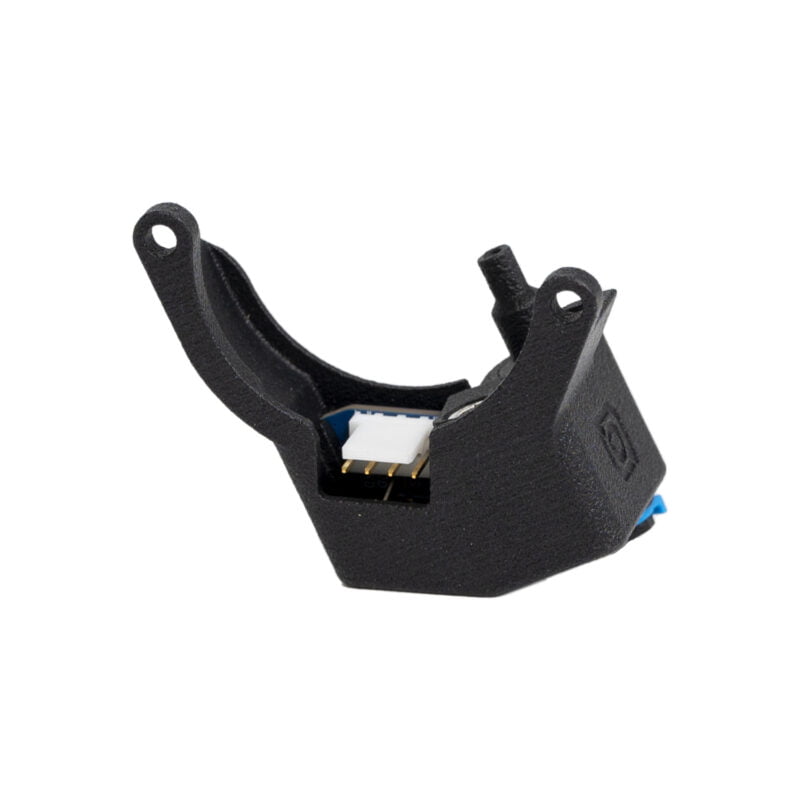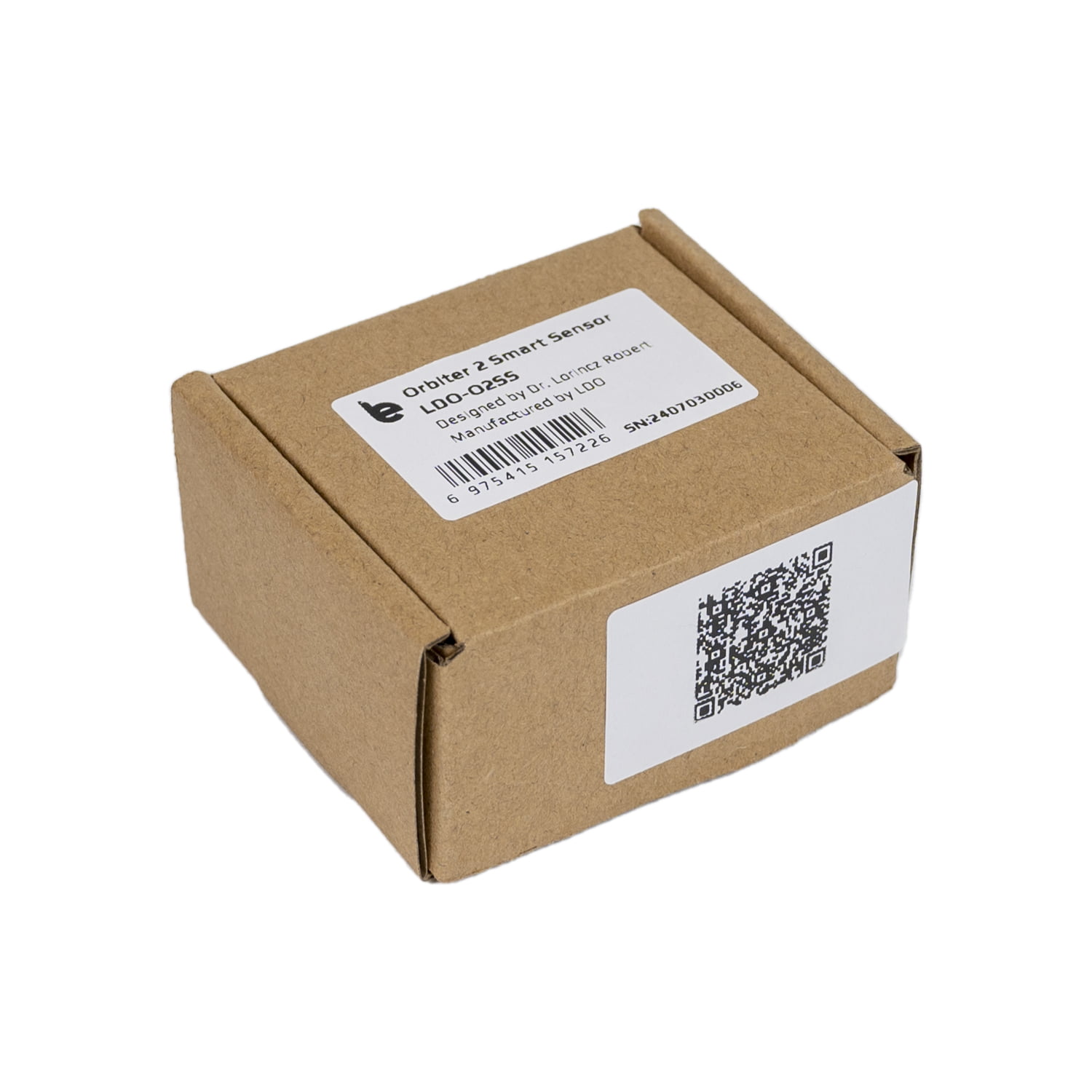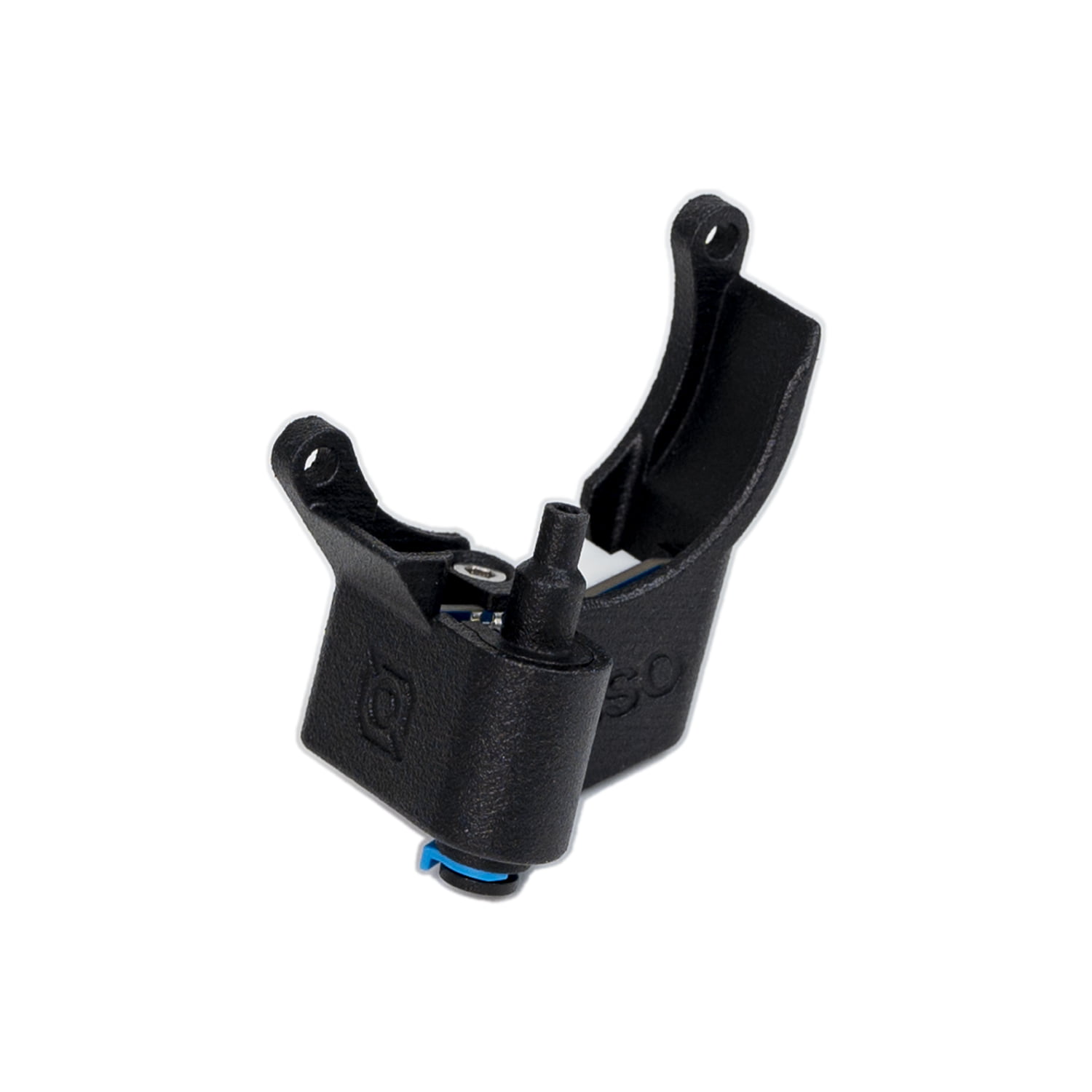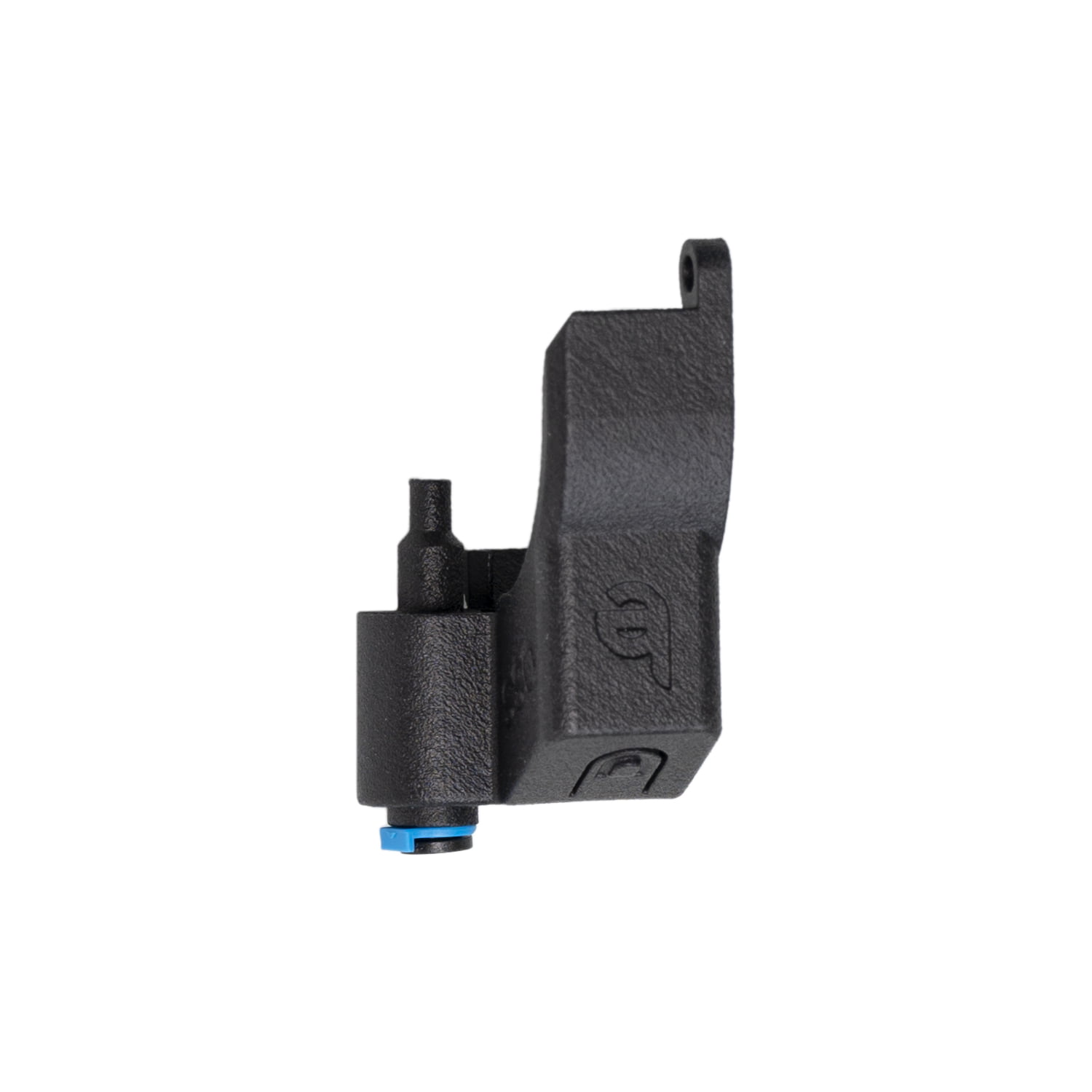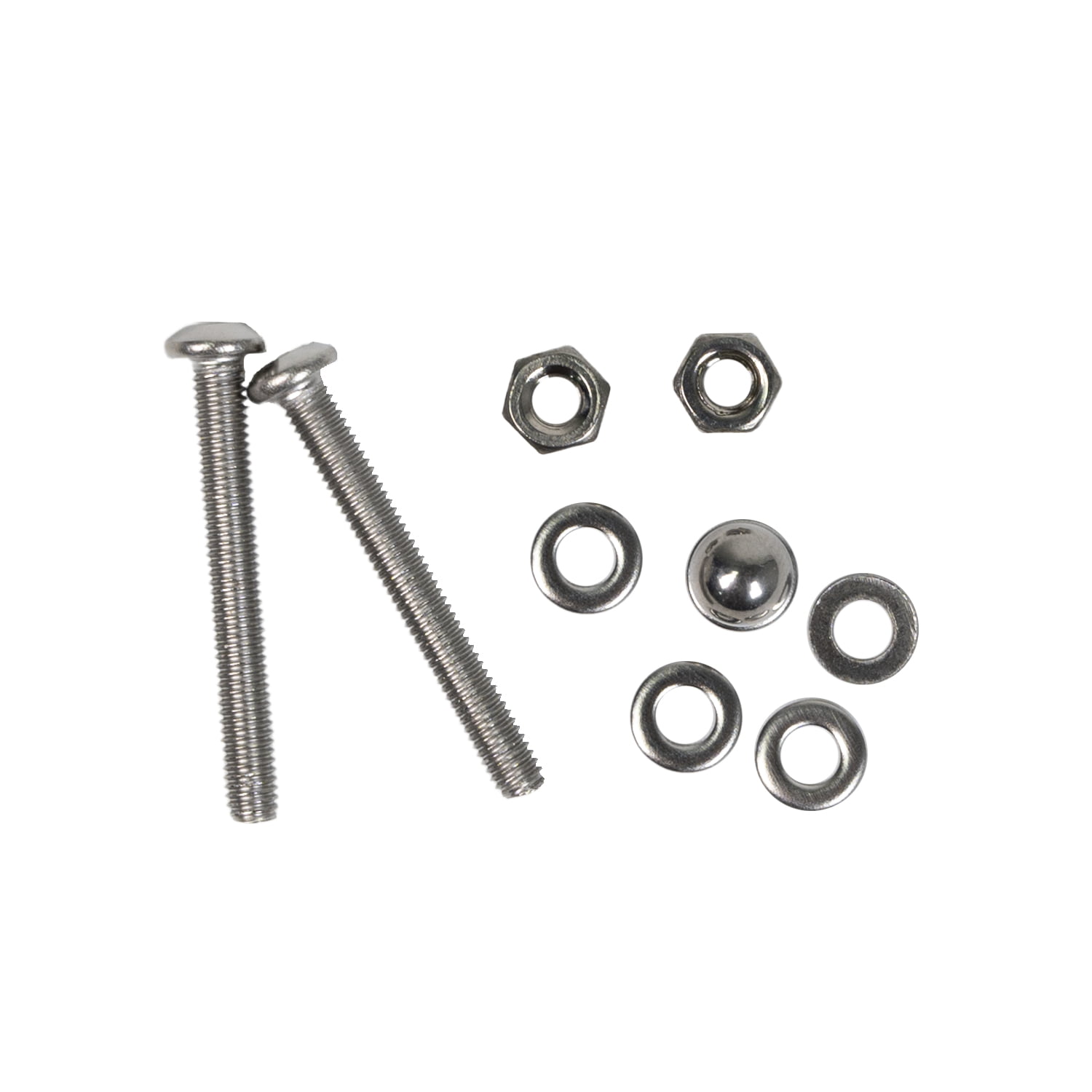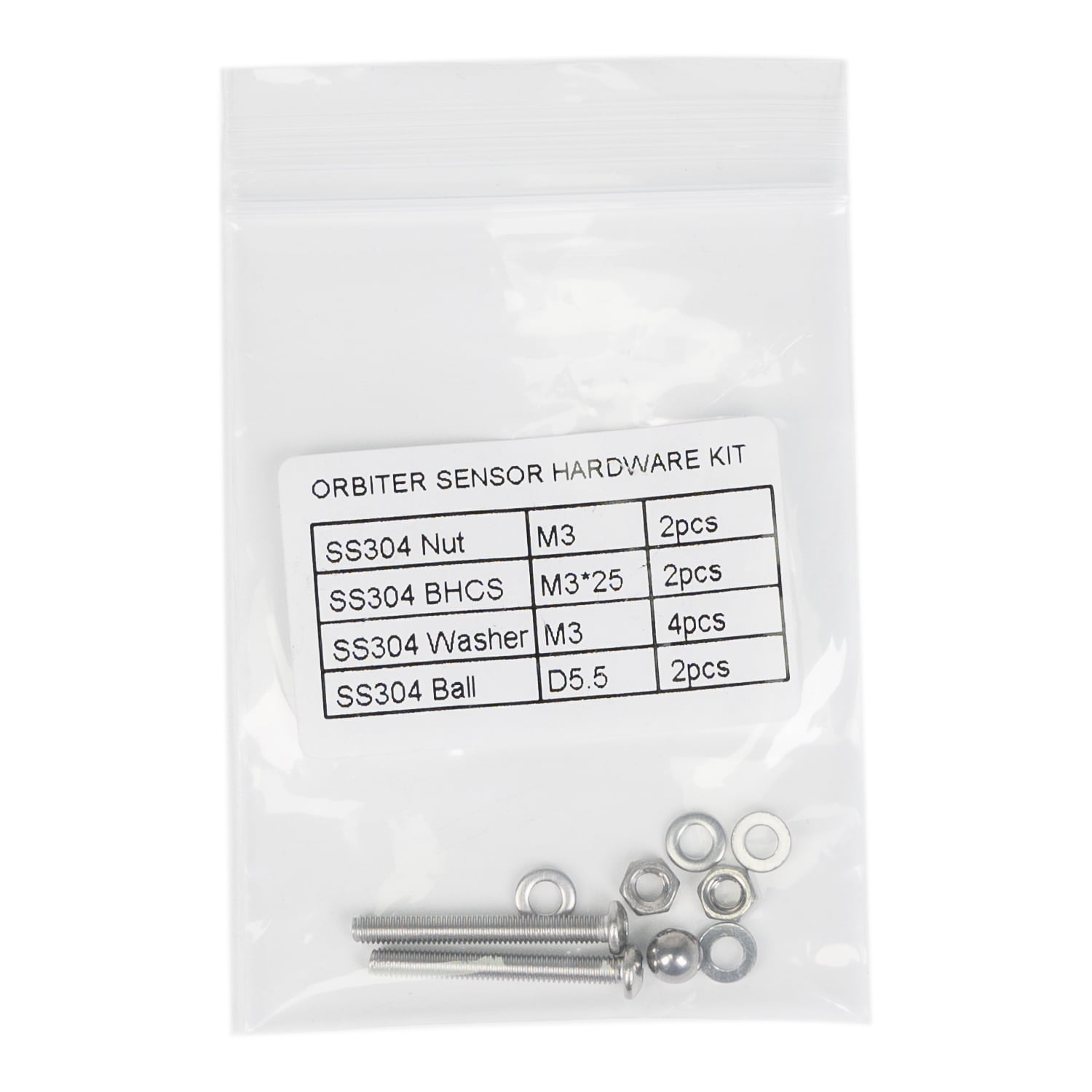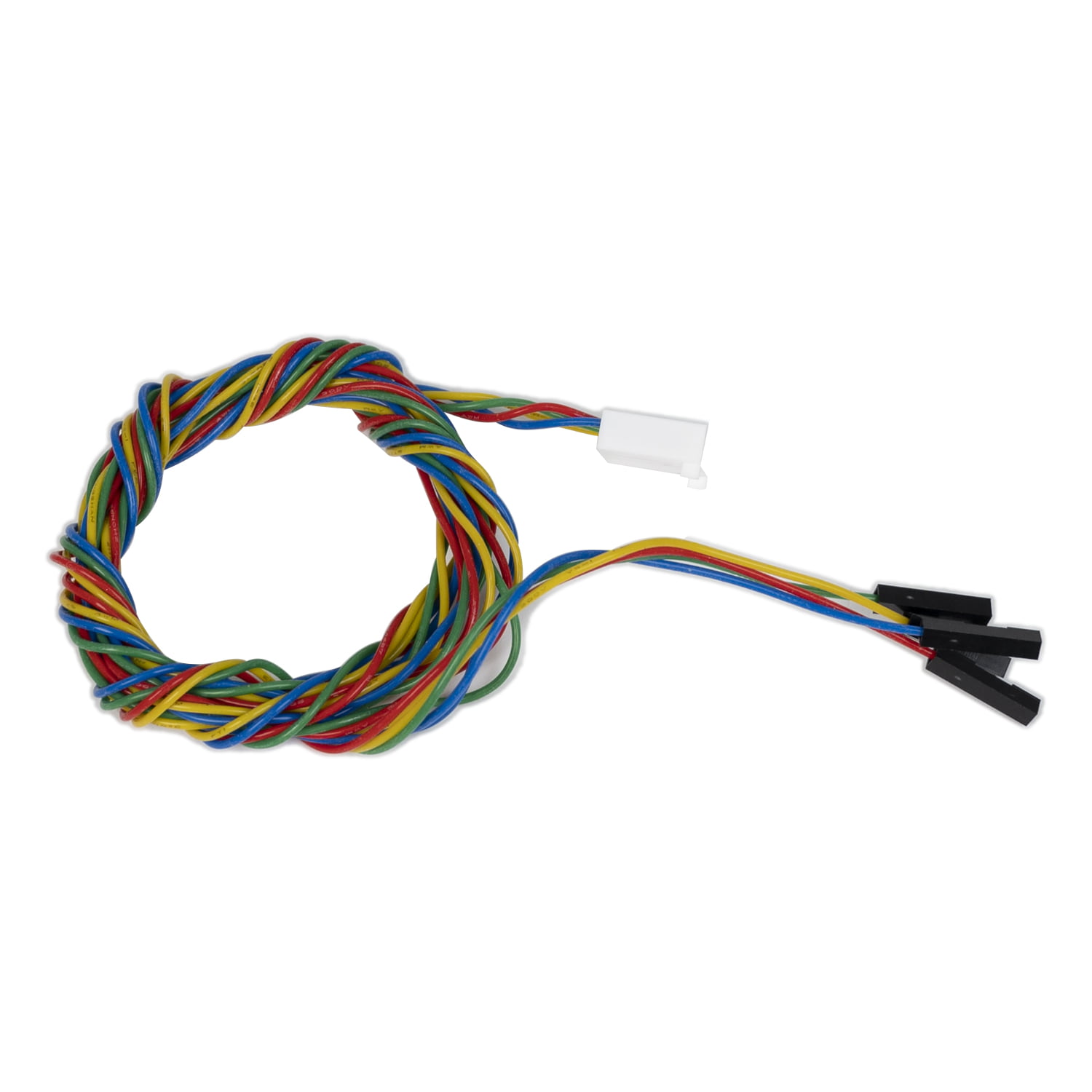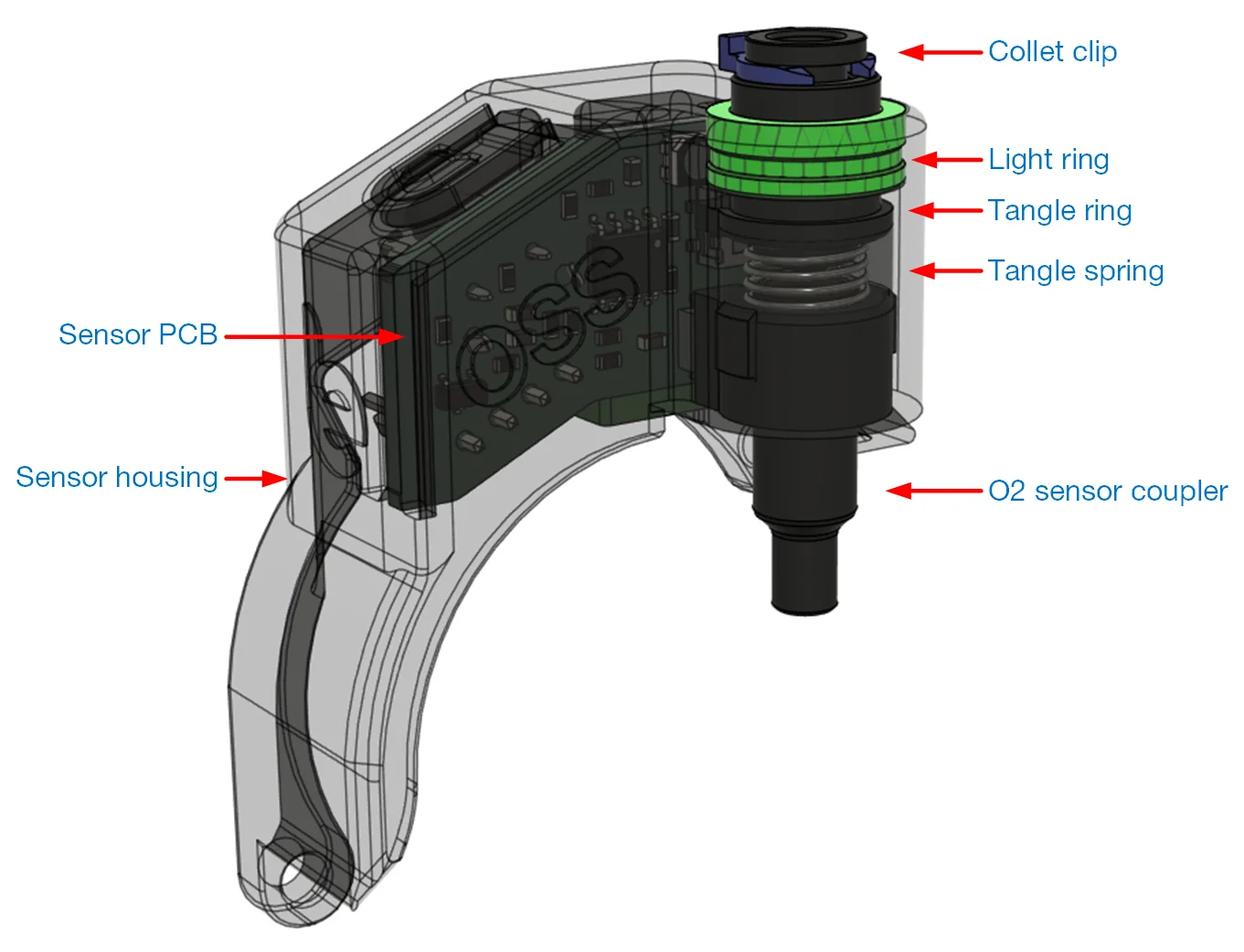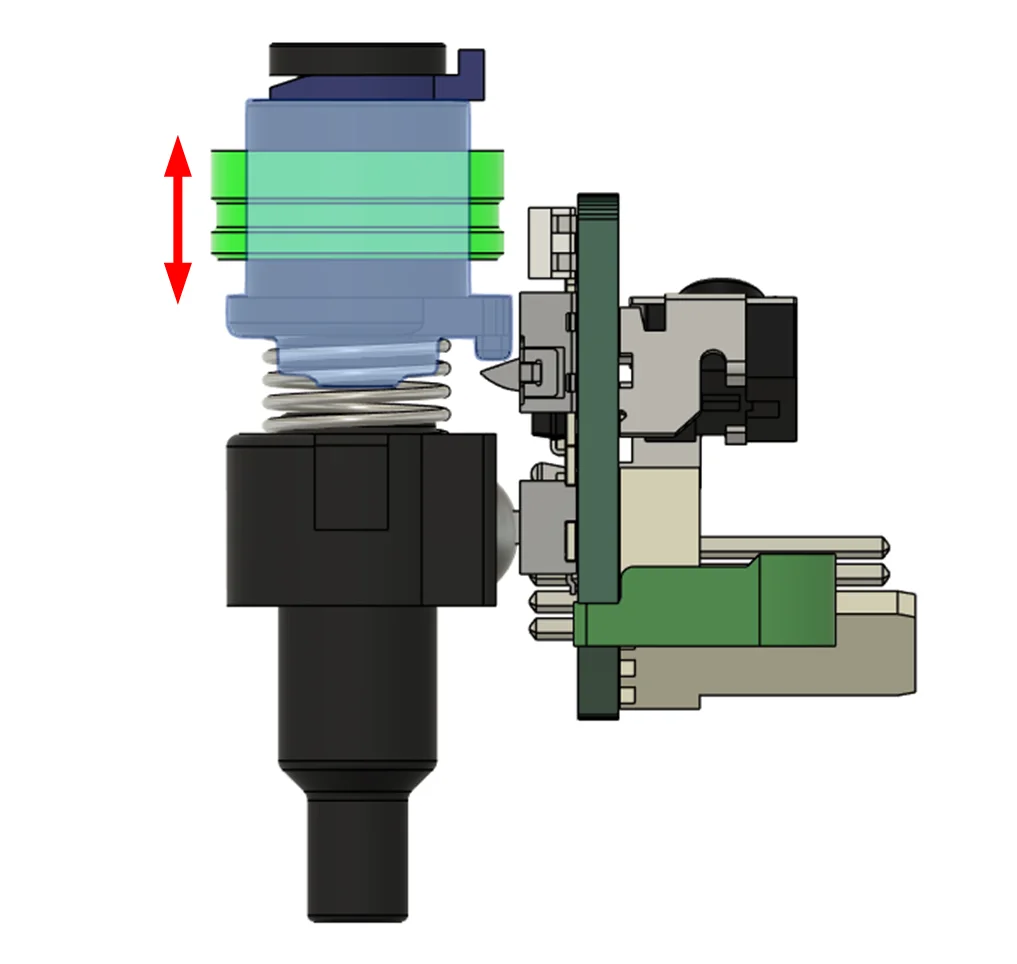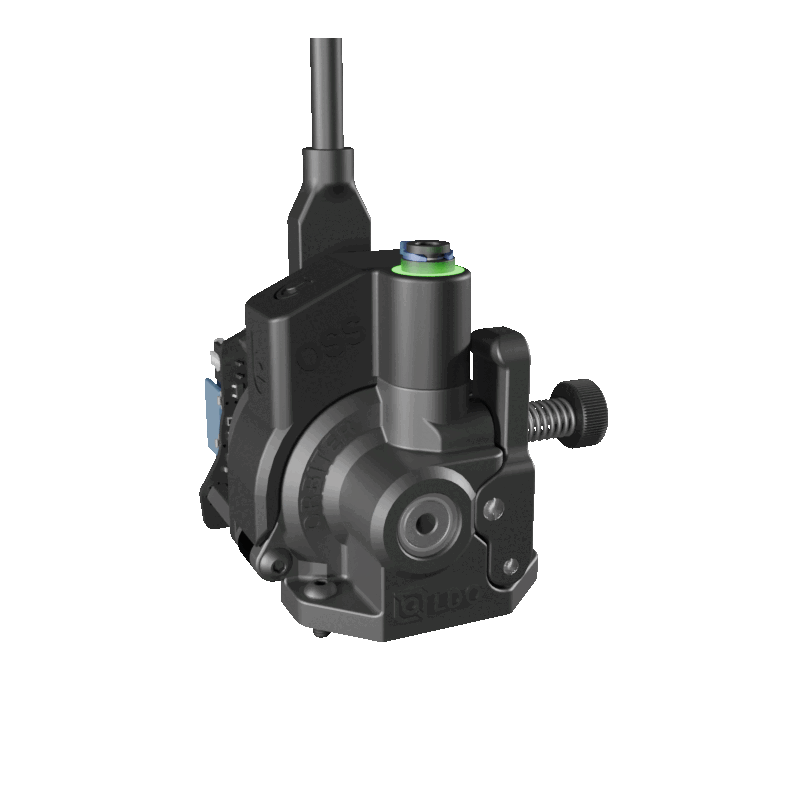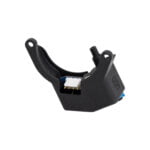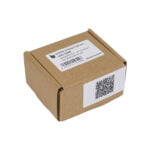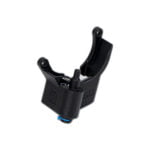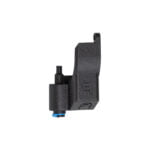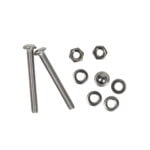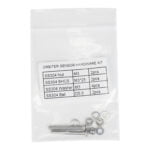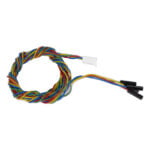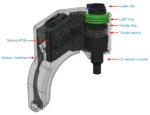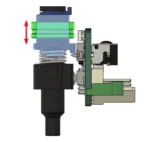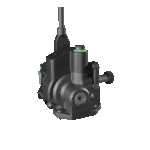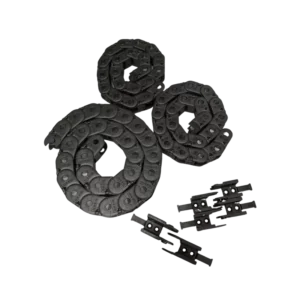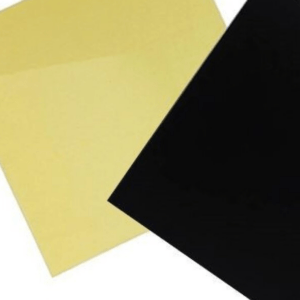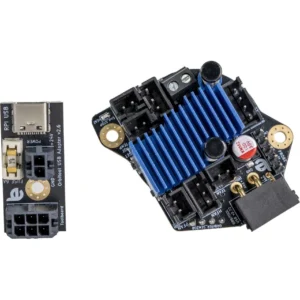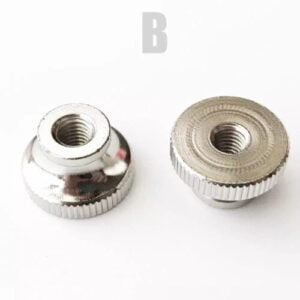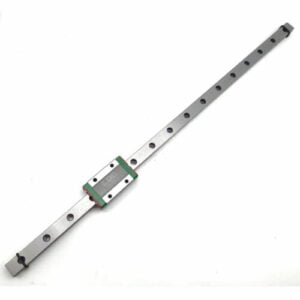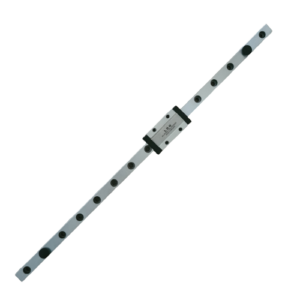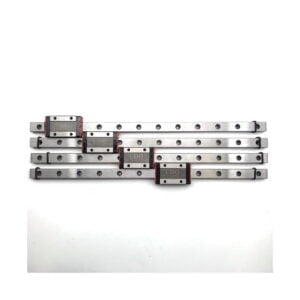LDO Orbiter 2.0 Smart Filament Sensor
This is the new LDO Orbiter 2.0 Smart Filament Sensor!
The main features are:
- Filament auto-load
- Filament tangle detection
- Filament runout sensing
- Filament un-load action button
Designed to run under Klipper but, not limited to.
Simple direct connection to the Orbitool USB toolboard of Orbiter v2.
This is a brand-new sensor design, much improved compared to the previous sensor version.
The first big change is the filament tangle detection functionality. Tangled filament is one of the most common causes of print failures. When the filament is tangled on the spool, the force required to pull the filament into the extruder increases, this triggers the detection sensor and consequently runs a Klipper macro to pause the printing and inform the user about the issue. The detection is activated when the pulling force is increased over two kilograms of force for more than one second. The wear of PTFE tube can also trigger tangle detection due to the high friction force.
The second big change is signal filtering and plausibility checking by the onboard microcontroller. Klipper native filament sensor support is not the best way to filter out all kinds of fake detections and debouncing of the input signals. To improve this, this sensor is equipped with a small, eight-bit microcontroller just for that job, plus it controls the RGB input light based on the sensor state in a much nicer way than is possible with Klipper macros.
Last but not least, a push-fit collet clip for better PTFE tube locking with an RGB illuminated ring around, which indicates the filament sensor / extruder status:
Red – no filament detected
Green – filament present
Blue blinking – filament unload
Yellow blinking – filament tangle
Design details
The design consists of an MJF printed housing, O2 sensor coupling, tangle ring, a small spring light ring, collet clip and the electronic PCB board, as shown in the figure.
The filament sensing uses a new end stop switch with longer lever movement; this helps avoid fake runout detections during fast accelerations. The sensor is pressed by the filament using a small 5.5mm steel ball. The main reason for it
is to take the friction away from the sensor switch lever. The filament cannot destroy the steel ball due to friction, but it would grind down the plastic lever of the sensor in a short time.


Tangle detection works by pressing down the tangle ring, which engages the tangle detection switch. The tangle ring is pushed upward by the small spring.
When the force in the PTFE tube overcomes the spring force (which is approximately two kilograms), the detection switch is engaged, and a signal is sent to Klipper.
For this mechanism to work properly, the PTFE tube must be secured at the filament entry side as well.
The PCB is fixed from the bottom side of the sensor by a PCB retainer and a screw.
This makes sure the PCB has no play and sits tight.

Sensor schematic details

The sensor consists of two end stop switches, one for filament and the second for tangle detection, and a tact switch for filament unload button. These signals are fed into a small microcontroller (ATtiny412) which primary function is signal debouncing filtering and conditioning. The micro also drives the two RGB LEDs, which illuminate the sensor input ring based on the filament presence and sensor state. The board is protected against reverse power supply connections and short circuits at the sensor output signals.
Smart sensor pinout

The sensor interface signals to the Klipper tool board are the same as for the previous sensor. The connector has four signals: GND, 3.3V (optional 5V), filament sense (FS) and unload/tangle (FTU) signals. The tangle and unload signals are multiplexed together to form a single signal, and the differentiation is done in the Klipper macro. When the printer is in the print state, the signal is considered filament tangle detection, and when it is not printing, it is considered the filament unload command.
What is included
- 1x sensor PCB
- 1x sensor housing printed in MJF slack
- 2x D5.5 Ball
- 2x M3x25 BHCS
- 4x M3 washers (m3x6x0.5)
- 2x M3 nuts
- 1x wiring harness
For more information and assembly instructions please visit:

